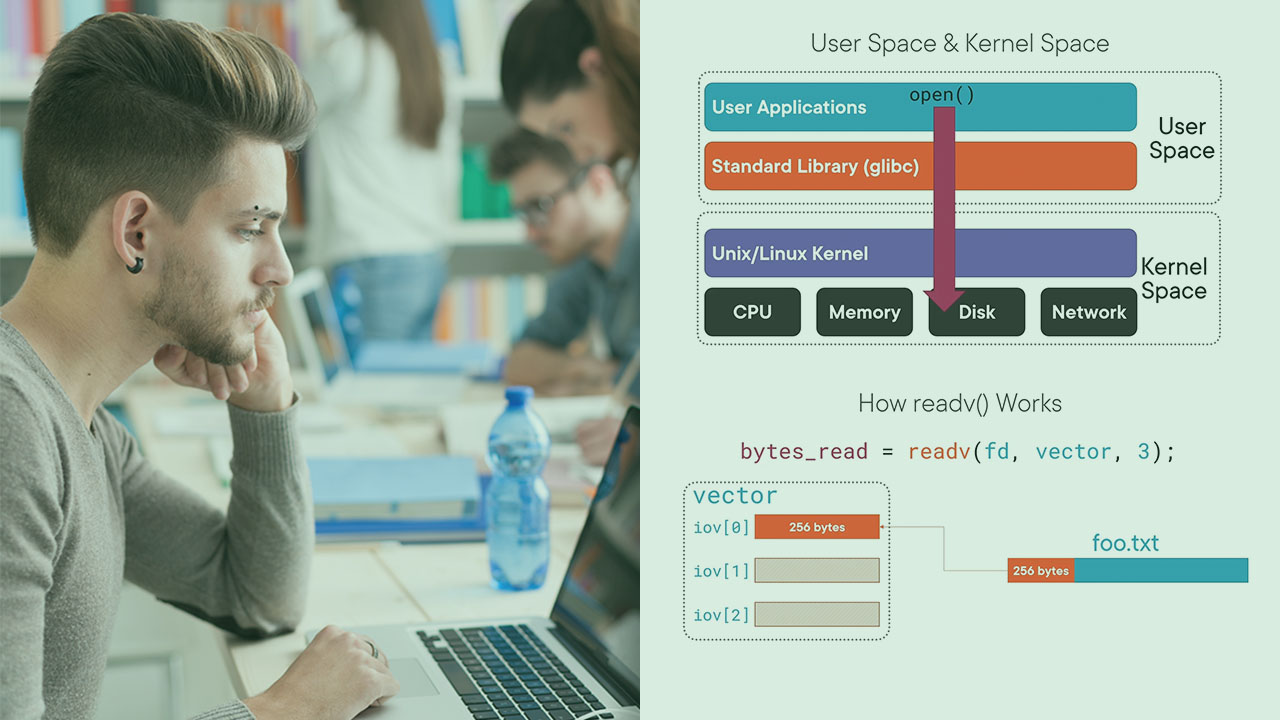- Course
Linux Systems Programming
The Linux family of operating systems is one of the most popular platforms to deploy modern applications on. This course will teach you how to interact with Linux operating systems in the C programming language.

- Course
Linux Systems Programming
The Linux family of operating systems is one of the most popular platforms to deploy modern applications on. This course will teach you how to interact with Linux operating systems in the C programming language.
Get started today
Access this course and other top-rated tech content with one of our business plans.
Try this course for free
Access this course and other top-rated tech content with one of our individual plans.
This course is included in the libraries shown below:
- Core Tech
What you'll learn
Whether you are writing an ultra-low latency trading algorithm for a high frequency trading firm, device drivers for an embedded system, or anything in between, modern software applications will often be developed on the Linux operating system. In this course, Linux Systems Programming, you'll learn how to interact with various aspects of the Linux operating system when developing software in the C programming language. First, you’ll explore how to create, read, and write files and directories through a variety of different means. Next, you’ll discover how to interact with the inputs and outputs of Linux software, such as command line arguments, environment variables, pipes, and signals. Finally, you’ll learn how to control access to files and directories through permissions and user accounts. When you’re finished with this course, you’ll have the skills and knowledge of Linux systems programming with the C programming language to confidently develop C-based applications on Linux operating systems in addition to a more wholistic understanding of how the Linux operating system functions.

